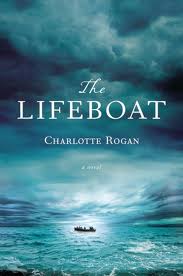There has been a lot of buzz surrounding the beautiful Tea Obreht and her stunning debut The Tiger’s Wife. Obreht was the youngest ever writer to win the Orange Prize and she was named one of The New Yorker‘s 20 under 40. More significantly, The Tiger’s Wifehas appeared on almost every list of the best books of 2011, both commercial and reader-based, and high-brow intellectual and literary.
This last seems to highlight the way that though the book appeals to a wide range of people (it has spent many weeks in the New York Times bestseller list, and has been number 1 on the ABA Indie Bestseller list for almost 20 weeks), it is also receiving praise from critics and prestigious reviewers. This combination of commercial potential and literary value seems hard to find – so what is the secret of The Tiger’s Wife?
The answer is difficult to describe. The book doesn’t exactly have a simple and clear plot, and Obreht’s subject matter stretches from the universality of death to the specificity of the war-torn Balkan experience. Her characters are sometimes mythical and sometimes real, and sometimes both at the same time.
On a simple level, you might say that this is a book about a woman coming to terms with the death of a beloved grandfather, and a country coming to terms with a bloody past, but that would be to ignore the most wonderful thing about the book – Obreht’s talent in using fable to “deliver a truth histories can’t touch“.
Understanding the magic of The Tiger’s Wife goes to the very heart of understanding why we read fairy tales – what emotional and human realities they can reveal to us in ways that normal writing cannot.
Albert Einstein claimed “If you want your children to be intelligent, read them fairy tales. If you want them to be more intelligent, read them more fairy tales.” G. K. Chesterton wrote that “Fairy tales are more than true; not because they tell us that dragons exist, but because they tell us that dragons can be beaten.”
By refusing to limit herself to realistic writing, Obreht transforms the tragedies of Balkan history and the struggle of one woman to commemorate her grandfather’s life into an emotional truth we can all share in and identify with. Not only this, she delivers a truth that is at once ‘real’ and believable, and also hopeful.
But Obreht’s achievement is even more complex than that, since she never lets her story fall into fable completely. Instead, by resolutely standing on the thin line between realism and fable, Obreht highlights the way that the two are necessary to each other. The conflict between science and superstition that the book deals with – both stylistically and through it’s content – is never resolved precisely because we need both in life. The breathtaking end of the book works exactly like this, leaving the reader stranded between these two poles of life and forcing them to keep thinking about the book for hours afterwards.
Perhaps the real secret to enjoying The Tiger’s Wife is by following W. H. Auden’s advice: “The way to read a fairy tale is to throw yourself in.” Throw yourself into The Tiger’s Wife, and it will reward you with a stunning reading experience and a moving emotional truth.







